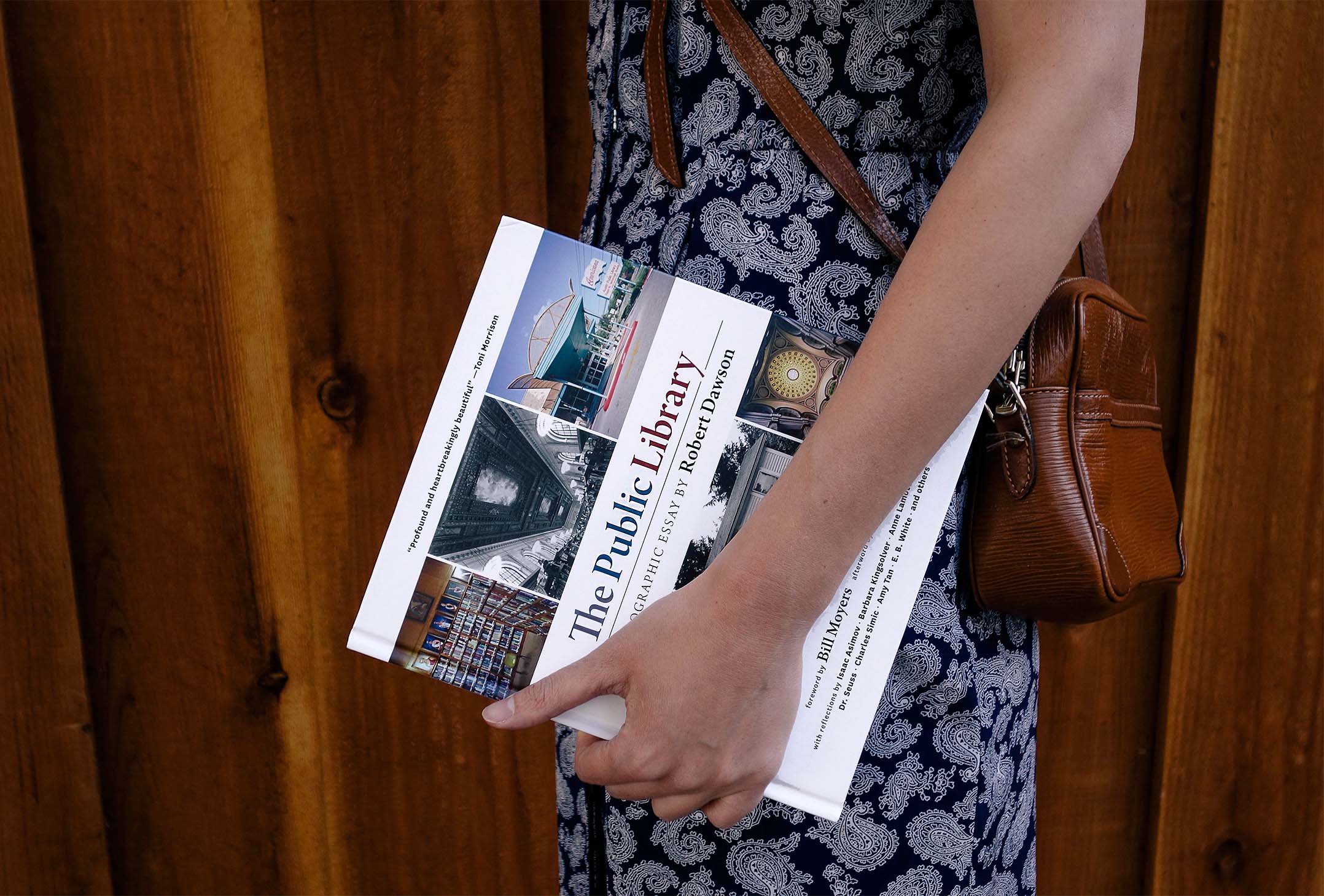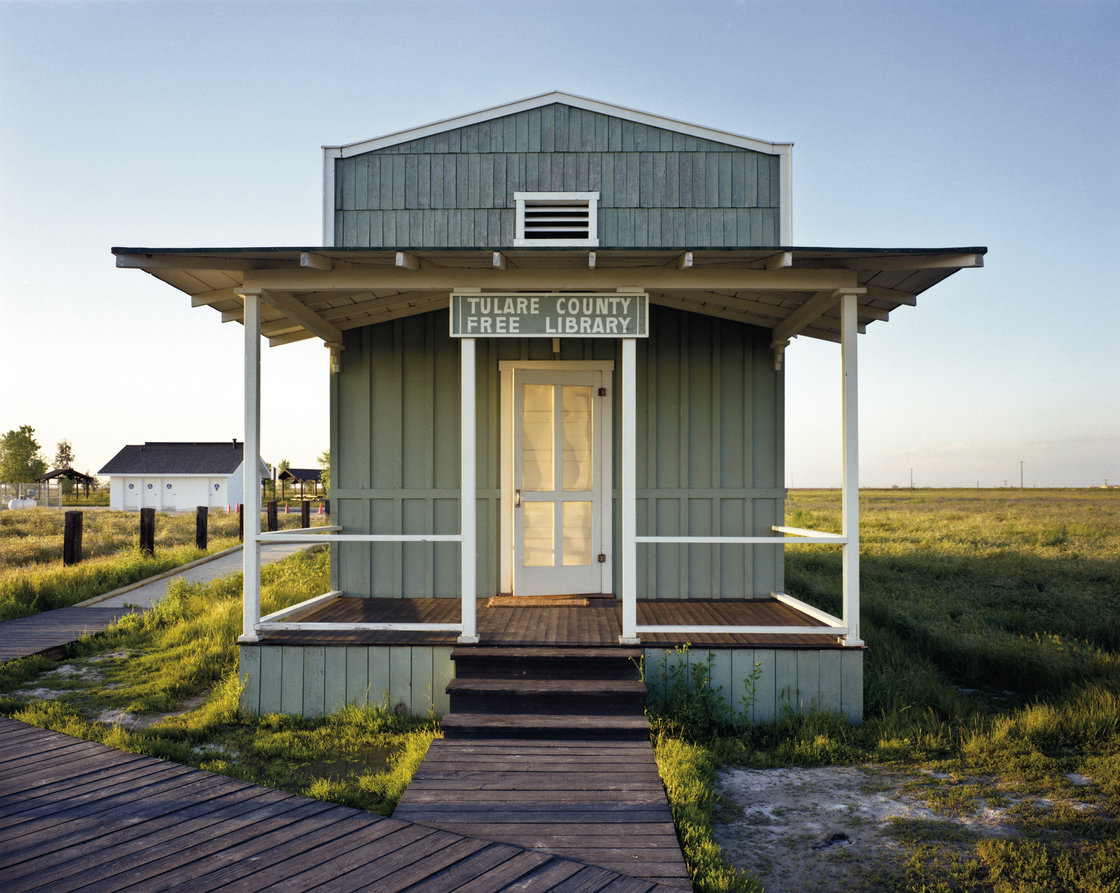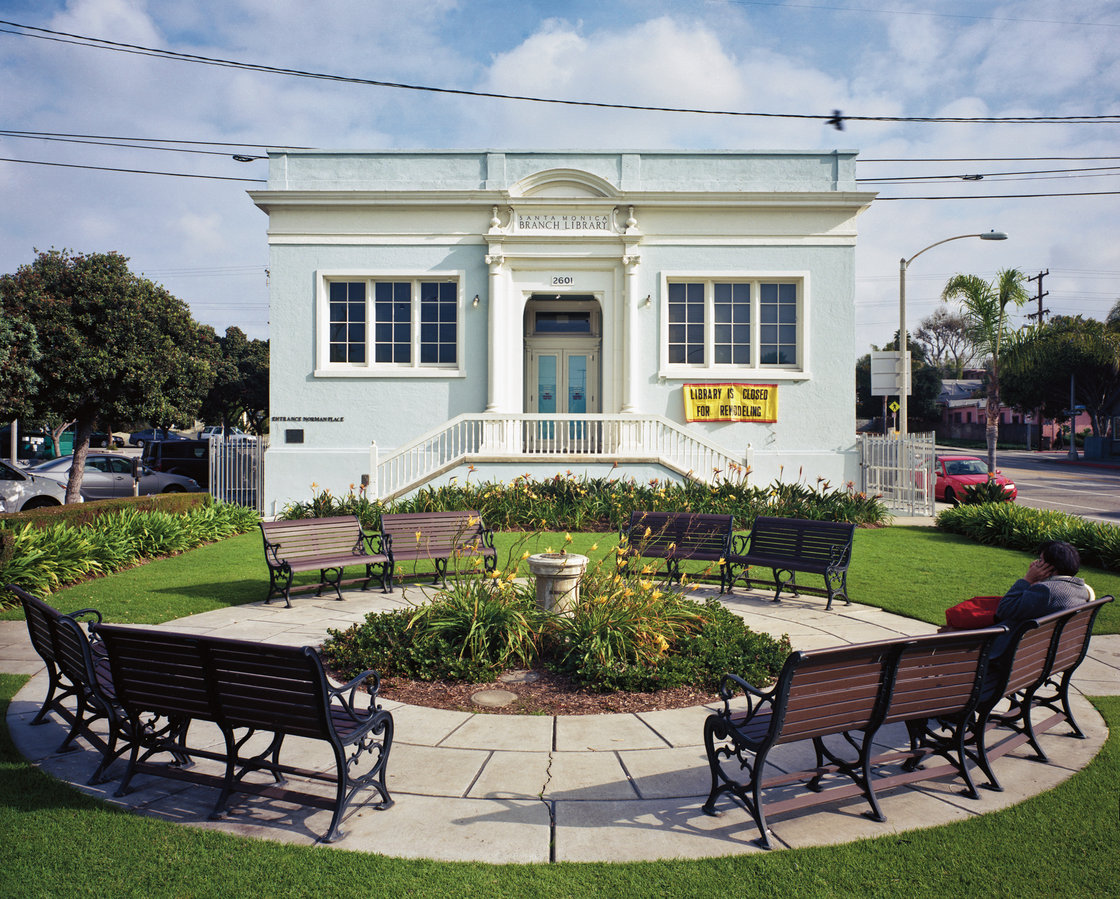

In terms of public gathering spaces, how is the public library unique?
“Public libraries are some of the few non-commercial, non-religious public gathering places that we have left. Other than public parks most of our country has been privatized. Public libraries are a symbol of the loss of the commons. This why I did this project and why I feel it is important to fight like hell to preserve the public space that remains.”
Why is the public library a good subject to photograph?
“Because public libraries are local they usually reflect the local values of the communities in which they reside. I tried to show that in the photographs. By creating this survey of public libraries throughout the nation, I also created a portrait of our country at this time through the lens of the local public library. Also, libraries are under threat. Because of the loss of funding for many libraries, I wanted to use the project to bring attention to the critical role of libraries throughout the country.”
Somebody has one full day to travel anywhere in the United States to visit a public library. Where do you advise they go?
“That is a difficult question to answer. Our country is vast with each region containing its own fascinating and unique history. I find libraries interesting throughout the country. However, if I was to advise someone to go to one area, it would be New England. The first tax supported public library started in Peterborough, NH in 1833. Like many good ideas in America, this one began in New England and spread around the world. Because they have a head start from the rest of the country, the history of libraries in this region is long and fascinating. From the beautiful Millicent Library in Fairhaven, MA, to the unique library/opera house built right on the US/Canadian border in Derby Line, VT, to the abandoned Hartland Four Corners Library in Hartland Four Corners, VT. New England libraries are special.”

Of all the books you were required to read for high school English, which is still a favorite?
“I remember reading The Grapes of Wrath by John Steinbeck in high school. I didn’t really appreciate this masterpiece until later, when I produced a book on my home region of California’s Central Valley where The Grapes of Wrath is located. I left the Central Valley at 18 vowing that I would never go back. Later, as an adult I found the area endlessly fascinating. It is sometimes referred to as California’s Third World. I am using my recent Guggenheim Fellowship to go back again to the Valley to examine libraries and literacy efforts in a very difficult environment. Steinbeck’s classic book is more relevant to me now than ever.”
Where are your favorite places to read?
“Usually, my favorite place to read is the hour before I go to sleep in bed. It is a way of calming down from the day and have my mind drift off into other worlds. My favorite book about people reading is a photographic book called On Reading by Andre Kertez. Pick up a copy if you haven’t seen it. It has just been reissued and I think you will be delighted.”
What was the last book you read? What are you reading now?
“I recently read the book The War that Ended Peace about the 20 year period before World War I. I became interested because of the 100th anniversary of WWI. It is scary to see the similarities to today, especially what is happening in Ukraine. To follow up on that I am reading Barbara Tuckman’s The Guns of August, which looks at the developments during the first month of WWI. She is one of my favorite historians and I have read many of her books.”


Thanks for the interesting read! Will have to grab a copy of the book.
I have always loved public libraries. Thank you for sharing this Q&A, I very much enjoyed reading it. 🙂